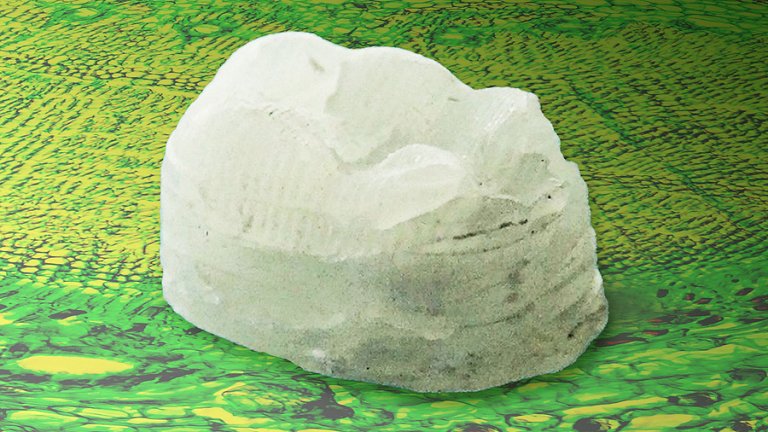advanced materials
Technology Innovation Website Editor – 02/15/2022
3D-printed tooth to demonstrate one of the possibilities of using the new material.
[Imagem: John Hart/Abhinav Rao/MIT]
Cellulose nanocrystals
Researchers have created a new composite of wood that is as hard as human bone and as strong as the finest aluminum alloys.
This material is expected to usher in a new era of bio- and renewable plastics.
The basis of the compound is cellulose nanocrystals, the most abundant natural polymer and the main structural component of all plants and algae.
Cellulose can be catalyzed to form nanocrystals, when its organic chains are organized in near-perfect patterns, mimicking mineral crystals. At the nanoscale, cellulose nanocrystals are stronger and stiffer than the popular Kevlar®. That’s why many teams are trying to capitalize on their advantages at the macroscopic scale, using them to shape new materials that act as stronger, more sustainable and naturally sourced plastics.
cellulose plastic
Abinav Rao and colleagues at MIT were unable to completely eliminate petroleum-based synthetic polymers, but when they mixed epoxy with cellulose nanocrystals, they obtained a compound with 60 to 90% organic crystals, the highest fraction of cellulose. Nanocrystals are already embedded in a material even today.
When they analyzed a sample containing 63% of cellulose nanocrystals by weight, the compound exhibited a hardness of 0.66 GPa and a fracture hardness of 5.2 MPa.
This is stronger and harder than some types of bone and harder than aluminum alloys. This was possible because the material is organized into a microstructure similar to a brick-and-mortar wall, resembling the nagar, the solid inner lining of the shell of some mollusks. In NCAR, this zigzag microstructure prevents cracks from spreading through the material.

The structure of the cellulose-based material is also reminiscent of natural nacre.
[Imagem: Abhinav Rao et al. – 10.1007/s10570-021-04384-7]
3D printed or molded
The team found a recipe for the compound based on cellulose nanocrystals that can be used both in 3D printing and in conventional casting, making it possible to fabricate structures of any shape.
To prove this, the researchers printed and molded the compound into coin-like pieces of film, which were used to test the material’s strength and toughness.
They also molded the compound into the shape of a tooth, to show that the material could one day be used to make cellulose-based dental implants that are stronger, tougher and more sustainable.
“By creating composites from cellulose nanocrystals in large quantities, we will be able to give polymer-based materials mechanical properties they did not have before,” said Professor John Hart. “If we can replace some of the oil-based plastic with naturally derived cellulose, that’s also better for the planet.”
Article: Printable, printable cellulose-epoxy and nano-crystalline composites exhibiting a shell-like hierarchical reinforcement
Authors: Abinav Rao, Thibault Devaux, Crystal E. Owens, A. John Hart
Journal: Cellulose
DOI: 10.1007/s10570-021-04384-7

Other news about:
More topics

“Friendly zombie fanatic. Analyst. Coffee buff. Professional music specialist. Communicator.”

